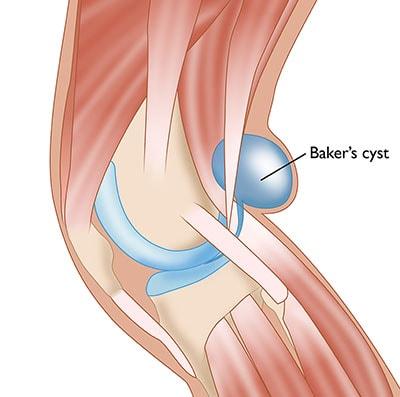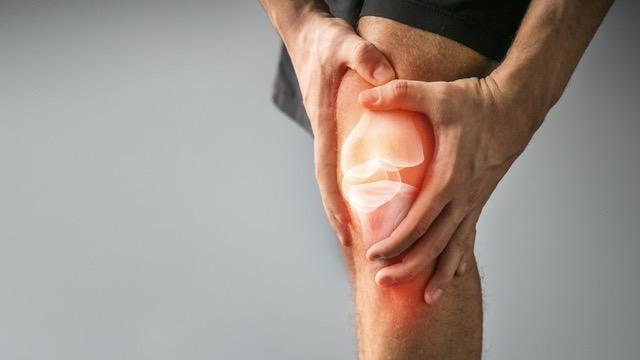Understanding and managing a Baker’s cyst might sound daunting, but with the right approach, it’s much easier to tackle than you might think. A Baker’s cyst, also known as a popliteal cyst, is a fluid-filled sac that forms behind the knee, usually as a result of underlying knee joint problems like arthritis or cartilage tears. The good news is that one promising treatment for this pesky condition is shockwave therapy. Let’s dive into how shockwave therapy can help, along with some essential tips for rehabilitation and things practitioners need to know.
What Exactly is a Baker’s Cyst?
Imagine you’ve got a tiny water balloon, except it’s not on your desk—it’s nestled behind your knee. That’s essentially what a Baker’s cyst is: a small, fluid-filled swelling that can cause discomfort. The symptoms can range from a noticeable bulge behind your knee to pain, stiffness, and even limited mobility. It often pops up due to other knee issues like arthritis, meniscus tears, or injuries.
To confirm it’s a Baker’s cyst and not something else, doctors typically start with a physical examination—feeling for that tell-tale swelling. If needed, they might use imaging tools like an ultrasound or MRI to get a clearer picture.

Why Consider Shockwave Therapy for a Baker’s Cyst?
Shockwave therapy might sound intense, but it’s actually a gentle, non-invasive treatment option. Here’s why it’s gaining attention:
- No Surgery Needed: Unlike some treatments, shockwave therapy doesn’t require going under the knife. It’s a non-invasive approach, making it a great option for those looking to avoid surgery.
- Pain Relief: It helps reduce pain by boosting blood flow and promoting healing in the affected area.
- Inflammation Buster: Shockwave therapy can help dial down inflammation, which is often a major source of discomfort.
- Better Mobility: By reducing pain and inflammation, this therapy can help improve knee function and range of motion.
- Quick Recovery: The therapy stimulates tissue regeneration, which can speed up the healing process, getting you back on your feet faster.
Extra Steps: Rehabilitation for Poor Biomechanics
Shockwave therapy is just one piece of the puzzle. To truly get on top of a Baker’s cyst, it’s crucial to address any underlying issues with your biomechanics. Here’s how:
- Physical Therapy: A good PT program will include strengthening exercises for the quadriceps, hamstrings, and calf muscles to better support your knee. Flexibility training helps keep muscles and tendons limber, while balance exercises enhance proprioception, reducing the risk of future injuries.
- Gait Training: Learning to walk properly might sound basic, but correcting your gait can reduce stress on the knee joint, which is key in preventing the cyst from coming back.
- Orthotics: Custom insoles can do wonders for better foot support and alignment, reducing strain on the knees.
- Lifestyle Tweaks: Sometimes, little changes make a big difference. Managing your weight can lessen the pressure on your knees, making it less likely for a cyst to reappear.
- Manual Therapy: Techniques like massage or mobilization can further improve joint function and relieve tension.
What Practitioners Should Keep in Mind
For healthcare professionals, shockwave therapy is a powerful tool, but it’s essential to use it wisely. Here are some things to consider:

- Thorough Assessment: Before diving into treatment, make sure to thoroughly evaluate whether a patient is a good candidate for shockwave therapy.
- Watch Out for Contraindications: Certain conditions, like infections, blood clotting disorders, or specific types of cancer, mean shockwave therapy isn’t the right choice.
- Proper Training: Practitioners must be well-trained in administering shockwave therapy to ensure it’s effective and safe.
- Holistic Treatment Plan: Shockwave therapy works best when it’s part of a comprehensive treatment plan that includes rehabilitation and follow-up care.
- Ongoing Monitoring: Keep a close eye on patient progress, adjusting treatment as needed to ensure the best outcomes.
Wrapping It Up
Incorporating shockwave therapy into the treatment plan for Baker’s cysts, alongside comprehensive rehabilitation protocols, provides a holistic approach that can lead to long-term relief and improved knee function.
Staying updated with Kinas Medical on the latest research in shockwave therapy and musculoskeletal rehabilitation will ensure you’re always on the cutting edge of treatment options. To learn more contact us today!

